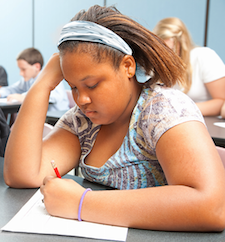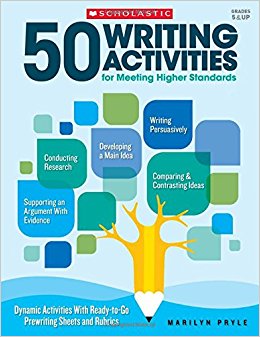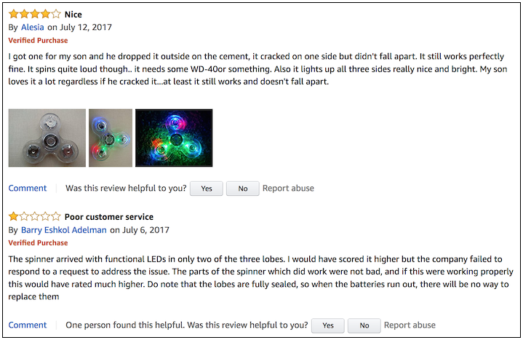Three Fun Activities to Keep Students Writing
 By Marilyn Pryle
By Marilyn Pryle
Writers become better by writing. As educators, it is our job to have students write regularly, genuinely, and with ownership.
Of course, in doing so, they will perform better academically, in every subject and on standardized tests, since consistent writing practice trains students to easily access their thoughts and skillfully express them. But when students write often and with purpose, they also grow as thinkers and as human beings. They discover not only their thoughts but themselves.
Although modern-day writing continues to morph into many forms, the written word persists and is more powerful than ever. The strength of a clear, engaging, meaningful message cannot be underestimated.
The good news is that with practice, effective writing can be learned. I try to dispel the myth that some people are born talented writers and everyone else is not. I strive to convince students that the stuff of their lives can be a basis for powerful writing, and that they can learn to write well if they commit to it.
A coach would never teach an athlete a technique once or twice and expect her to be able to perform it perfectly from that point on. In sports, free throws, flip turns, serves and spins are practiced thousands of times each year. So it is with writing.
A gift we give our students
As with any task, it is possible to become absorbed when writing and experience full presence. One must turn inward; one must be silent. What a beautiful gift to give to students in a world full of loud, shallow distractions.
And writing can give students even more than that – in order to write well in any genre, students must look deeply into their own daily lives and memories, at the colors, smells, and sunlight, at eyes, hands, and words. With practice, this persistent looking can expand into a way of being, a way of living more in the present at all times, a constant noticing.
This is the true grace of the writing life. If we can give even a fraction of that to our students through the work of writing practice, we will have succeeded.
3 Fun Activities to Keep Students Writing
#1: What’s In a Name?
This is an easy way to have students combine research, autobiography, and opinion about a topic they know well – their own names! The Prewriting Sheet is attached below as a PDF.
Student Directions:
- You will write a short personal essay about your own name. Complete the What’s in a Name? prewriting sheet.
- Write a draft and have at least four paragraphs:
- An introduction, using a short “everyday” moment with sensory details
- A facts paragraph about your name, using your research
- A paragraph explaining how you got your name, and any special meaning
- A conclusion, in which you give your opinion about your name
- After you have a draft, edit your essay and revise again. Give the piece a title.
- Submit your essay with your drafts and prewriting.
Here is a What’s in a Name? model paper by a boy named “Tiernan.”
#2: Personal Ballad
This is one of my favorite activities to assign, because the resulting poems are so heartfelt and textured. In my high school class, we read Li Po’s “The River Merchant’s Wife: A Letter” as an example. In my book, I include an easier model for middle school students. I’m sharing it with you here; it’s called “Moments” by Nina Gurganus.
As a mini-lesson, demonstrate to students how imagery communicates mood – how, even though thousands of images swirl around every moment, writers choose specific images to do the work of making the reader feel a certain way.
I emphasize to students that the “milestones” for this poem need not be life-or-death: Any vivid, every-day moment can be just as powerful. But whether big or small, I am always moved by the memories students choose, and the meaning they find in them. A PDF of the Prewriting Sheet is included below.
Student Directions:
- A ballad is a poem that tells a story about a person or event. You will write a ballad about yourself using some milestones or memories from your life. Each stanza will represent a different age from your life. You will use images to show how you felt during each memory.
- On the Personal Ballad prewriting sheet, brainstorm at least 4 milestones or memories in your life. They can be big or small
- Next to each memory, brainstorm several images (sight, sound, smell, touch, taste) that you remember from that moment. Try to choose images that show how you were feeling in the memory.
- Write a rough draft of your poem. In your first line, use an image to show how old you were.
- Make each memory its own stanza. Use your brainstormed details to pack each stanza with images as you retell the memory. Have at least 5 lines in each stanza.
- Try to think of a meaningful ending that could tie your memories together. Think of a title.
- Revise your poem and upgrade three verbs. Submit all drafts.
#3: Product Review
For this activity, you could either copy “Most Helpful” and “Least Helpful” online reviews or let students browse around and find their own. Sites like Amazon, Best Buy, and Target will probably have the most reviews, but students will be motivated to find reviews of products on sites that interest them most. (Keep in mind a “product” can be a physical object or something untouchable, like a video game or app.)
Explain to students that their claim is their opinion, and it may come at the beginning of the review, the end, or both. Either way, the reasons given in the review should support the claim. This activity also lends itself to a discussion about purpose and audience.
One important note: A “Helpful” review is not necessarily perfectly or deeply written – use this fact as a talking point about purpose and audience. In addition, you can have a whole class discussion about the elements of a “Most Helpful” review. (And post a summary of the discussion in your classroom so students can see it as they write.) Be sure to emphasize that negative reviews can be helpful in steering consumers elsewhere.
When finished, students can post their reviews online, if permitted by their parents. The Prewriting Sheet is included below as a PDF.
Student Directions:
- Read at least 5 “Most Helpful” product reviews and at least 5 “Least Helpful” product reviews online.
- Answer the following questions:
- Find four qualities that make a review “Most Helpful.”
- Find three qualities that make a review “Least Helpful.”
- What kinds of titles do the “Most Helpful” reviews have? Are they engaging or informational?
- What other elements (photos, videos, charts, lists) appear in the “Most Helpful” reviews?
- What are the introductory techniques in the “Most Helpful” reviews? What are the conclusion techniques?
- Complete the Product Review Prewriting Sheet.
- Write your review. Be sure to have one main idea per paragraph.
- Read what you have. Revise. Underline the sentence that contains your claim.
- Edit your draft and revise again. Upgrade four verbs. Be sure to have a title.
- If you are including any visuals, create and save them.
- Submit your final copy with all prewriting and drafts.
- When ready, upload your review to the appropriate site.
Teachers can find good Product Review models online, at many sites. I always use “Most Helpful Reviews” from Amazon to share with my students.
Building Voice Along with Skills
In my own classroom, we write all the time, and my goal in publishing my new book 50 Writing Activities for Meeting Higher Standards has been to give teachers plenty of writing assignments to choose from, to keep your students constantly writing. Although rubrics are included with each activity, not everything has to be graded with a formal rubric. Plenty of writing in my class goes formally ungraded but verbally conferenced. It all helps.

As educators, we must convince students of this by helping them write about their lives and opinions honestly and clearly, and by encouraging them to participate in the larger conversation of our shared existence.

Marilyn’s book, 50 Writing Activities for Meeting Higher Standards (Grades 5 & Up), contains dozens of ideas to keep students writing, with printable directions, rubrics, and writing models included. She has also written Writing Workshop for Middle School.
See all of Marilyn’s MiddleWeb articles here.




































